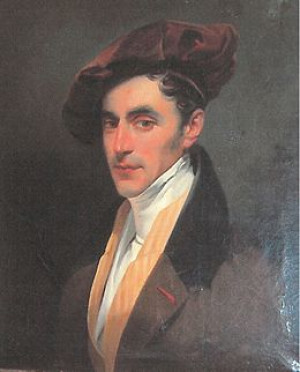21, rue de Saillé
44350 GUÉRANDE
Julien-Michel Gué ( - )

In 1794, following the assassination of his father during a black slave revolt, Julien-Michel Gué had to leave the island of Saint-Domingue where he was born, to return to Bordeaux, his family's home town. He was apprenticed in a tobacco factory, took drawing lessons in the evening and became a pupil of Jacques-Louis David and then of Pierre Lacour at the Ecole des Beaux-Arts in Bordeaux. He was awarded the second prize of Rome in 1815.
Gué's painting evolved over the years. He began his career with neo-classical antique subjects which were very fashionable at the time. Then landscape views from 1820, among others for Baron Taylor and his "Voyages pittoresques et romantiques dans l'ancienne France". He will also realize decorations for the theatre until 1835, wallpapers for the manufacture Zuber in Rixheim. He also decorated buildings such as the ceilings of the throne room of the Hôtel de Ville in Paris, and from 1835 onwards he painted history, including a commission from Louis-Philippe for Versailles. He ended his life painting religious or biblical subjects.
Gué is present in many museums: Bordeaux, Rennes, Versailles.